 Car Styling has been following Bill Mitchell’s personal creations on two wheels in three separate issues. A designer, a great one at that, is a designer whatever he designs. And a leader is a leader. In his privately more flamboyant way, Bill Mitchell has been prophesying trends in motorcycle design and engineering.
Car Styling has been following Bill Mitchell’s personal creations on two wheels in three separate issues. A designer, a great one at that, is a designer whatever he designs. And a leader is a leader. In his privately more flamboyant way, Bill Mitchell has been prophesying trends in motorcycle design and engineering.
Of his latest cafe racers, the most significant is the Honda CB550 Four based ‘Yellow Jacket’. Bill Mitchell has added to his already sizable stable a number of interesting roadsters and road-racers (he shows scant interest to off-road bikes). These include such true heavies as the Honda GL1000 water-cooled four, the Honda CB750A Hondamatic and the impressive Benelli Sei 6-cylinder bike. They must serve as his research vehicles for performance, refinements and innovations, as offered by the respective manufacturers. Mitchell’s concept of an ideal roadster is not, however, found among those heavy weights. It is a slim, light-weight machine with low center of gravity that offers exceptional road holding, handling, and maneuverability.
A steerable quarter fairing has always been a Mitchell hallmark on his conversions. The fairing integrates instrument and indicator clusters. And he insists on a row of shift-position indicator lamps in addition to the standard instrumentation.
He may retain the original fuel tank, to which new seat base and tail section are added. The tail and stop lamps are always integrated into the tail section design. Several bikes are given all new one-piece “‘bodies’’ that include fuel tanks. A classic example is the Honda CB500 “Banshee,” of circa 1974.
Mitchell does not object to multiplicity of cylinders, but he would insist on an electric starter—through a painful experience no doubt! He would want the seat height lowered as much as mechanical layout permits. Again lower center of gravity and easier riding position. Above all, he would want light weight. There are certain limitations as to how far the manufacturers, especially volume producers, could go in lowering weight. Productivity, production tolerances, durability and reliability, and safety must be all considered and balanced against lower weight. You could however turn to such reputed specialists as Rickman, Dunstall and Egli, and obtain lighter components. Mitchell has taken such a route in his Kawasaki 900 cc four which has the special Rickman frame made of Reynolds 531 tubing.
The “Yellow Jacket” is a gaint leap ahead of all this, in that it employs a specially fabricated aluminum monocoque frame designed and produced to Bill Mitchell’s specification. The complete bike powered by the stock Honda CB550 Four and complete with a quarter fairing scales incredibly light 167 kg (368 Ib) wet! Low c.g. is obtained in the Yellow Jacket by the adoption of 16 inch aluminum rimmed wheels, now a very rare size indeed after its boom in the late fifties in Japan, shod with fat Goodyear racing tires.
Mitchell’s original design plan called for a wild one piece fiberglass body integrating fairing, fuel tank, seat base and tail section. In fact, this concept was realized in a preceding project, the Harley Davidson 1000 ‘‘Stingray.’’ Halfway through the Yellow Jacket project, he returned to the original configuration—the Mitchell traditional looks. Obviously the completed Yellow Jacket is a more roadable and practical machine. Function must have prevailed styling. Or the rivetted surfaces of the monocoque were too pretty to hide.
The 1976 season has seen many a change in the motorcycle design. Quarter fairings, oddities a few years ago seen only on super sports bikes offered by BMW and Italians, are now commonplace, as the recent Cologne Show revealed. Fuel tanks, seat bases and tails are quickly becoming ‘‘bodies’’. Surfaces and lines are now treated boldly to express characters. Unique paint schemes and decals brighten graphics. A new era of motorcycle design
has arrived.
Then observe the new Moto Guzzi V50 Twin. A 500 cc V-twin shaft-drive roadster that weight 164 kg. (361 Ib) wet! Kawasaki’s 650 cc Four is a right direction toward tomorrow’s lighter and more comact super bike. Hope for a small diameter wheel and wide section tire combination. Marriage of cast alloy wheels and tubeless tires is a distinct Possibility. Consider the latest Avon development, the tubeless road tire ‘Roadrunner (unfortunately available in one and larger size only at the moment.)’’
Monocoque. Still problems to be solves in production techniques and cost. British NVT (Norton Villiers Triumph) combines latest air-cooled Wankel twin rotor prototype has a monocoque frame, and is reported to be a true stormer.
No direct relation to the function and performance of a bike, but Mitchell’s sense of perfect color coordination should soon find followers. Matching head gear, apparels and foot wears. Superficial? Well, oneness is motorcycling. Why shouldn’t colors help some?
Honda 550 Yellow Jacket
This is undoubtedly the most significant and revolutionary among Bill Mitchell’s latest creations. The power unit —a single overhead camshaft parallel 4-cylinder engine mated to a 4-speed gearbox—is Honda, but the rest of the bike is Mitchell, hence our christening it Mitchell-Honda.
The Yellow Jacket features an all aluminum monocoque body/frame. from which the power unit is suspended. The engine is equipped with special Dunstall pistons and camshaft. also Dunstall’s 4-into-2 exhaust gives the bike a healthy sound in conjunction with the enhanced performance. Sixteen inch aluminum rimmed wheels are shod with fat Goodyear racing tires – an unusual size combination these days. which help lower the center of gravity. The front quarter fairing steers with the handlebar, again reflecting Mitchell’s philosophy of motorcycle functions, and has built-in VDO instruments, indicator lamps and shift position indicator panel.
The Yellow Jacket weighs an incredibly light 368 lb. wet (167 kg.)! The name comes from that of certain yellow and black social wasps, whose color scheme is used on the bike.
Design Development
Design of the Yellow Jacket has taken quite a sharp veer from its concept of early 1975. It may be of interest to recall its early stages of development.
1. Full size drawings being studied by Dave North, a GM designer who is Mitchell’s trusted lieutenant on the super bike projects, in consultation with Bruce Burness, a Californian racing car builder who has undertaken the actual construction of the monocoque section. The drawings show one piece body, integraging a mini-faring, fuel tank, seat base, and tail section. Note enclosure of the power unit in the side view. Contemporary cast alloy wheels would have suited the character of the Monocoque better, but no proprietary wheels of the 16-in. size were available.
2. Cardboard and masking tape are used to form a monocoque shape to investigate the layout.
3. Exquisitely shaped fuel tank section. too pretty to be painted, let alone being covered by a superficial body. checked on the testbed frame of duplex cradle construction (Norton Manx 7).
4. Montage photo of the Monocoque. The body outlines closely follow those of the original drawings. Note the shallow windscreen under which a row of instruments and indicator lamps are seen. The bike part has already been completed. The rear swinging arm has closed box section and appears to be robust. which should ensure high mounting rigidity, an important design feature for better road holding and handling characteristics.
5. Preceding project to the Yellow Jacket is this Harley Davidson 1000 cc track racer based super roadster, the Stingray.
6. The completed Stingray, which pairs with a Corvette design exercise with the same name.
Honda CB750A Hondamatic
The CB750A features a semiautomatic transmission a la Civic Hondamatic, which includes a torque converter and a foot operated 2-speed gearbox. The bike ts basically stock except for such deft Mitchell touches as a quarter front fairing that encloses the instrument panel, a patent leather seat and a new tail section with slotted tail lamp.
Kawasaki-Rickman 900
Kawasaki’s Z1 roadster is indeed the reputed King of Superbikes. Powerful and fast as it may be, it is a heavy-weight in the true sense of the word, and some riders may find it a bit of handful. Bill Mitchell had owned a Kawa in stock conditions except for special color scheme matching to that of GM’s Pontiac Firebird. The Rickman conversion is considerably lighter than the Z1. The famous DOHC 4-cylinder 900 cc engine is now mounted in a special frame made of Reynolds 531 manganese molybdenum tubing. A set of Hooker pipes were installed. A one piece body is made of light weight fiberglass with built-in tail and stop lights. The front quarter fairing includes instrument cluster. Brakes are discs fore and aft. The total weight of the bike ts only 468 lbs. wet (212 kg.) Red flames against black background are very American!
Benelli ‘SEI’ 750 6-Cylinder
The “SEI” ts the world’s only 6-cylinder motorcycle devised by Alejandro de Tomaso, a shrewd Argentinian ex-racing- driver-turned-automotive entrepreneur, well known for his brutal Pantera cars, the acquisition of the Ghia operations (later sold off to Ford.) and the salvage of Maserati. To challenge the Japanese supremacy, Benelli built this fantastic Six whose design was really a Honda CB500 Four with two more cylinders.
De Tomaso chose the Maestro of Italian styling. Giorgio Giugiaro to style this Striking motorcycle. A number of similarities may be noted between the Ser and the Suzuki RE5, whose original design was also Guigiaro inspired. for example, in the mudguard section and the very automotive instrument panels of the two bikes.
Mitchell’s SEI is basically left stock except for adding the front quarter fairing, and the specially designed tail section with the tail lamp being made to look like the Italian flag with the same red-white-green color scheme.
An extraordinary cafe racer by the two great designers of the world.
Honda CB500 Four “Banshee”
This is one of Bell Mitchll’s old works, first introduced in Car Styling No.7 in 1974. After a short adventure with the wild Harley, Michell has returned to the Banshee formula which must be regarded as a meeting point of function and style.
Car Styling readers may note that the four-wheeled Banshee, a Pontiac Firebird-based design exercise, was displayed at this year’s Paris Salon, and reporyed in some quarters as GM’s latest styling effort. We all know they had it two years ago!

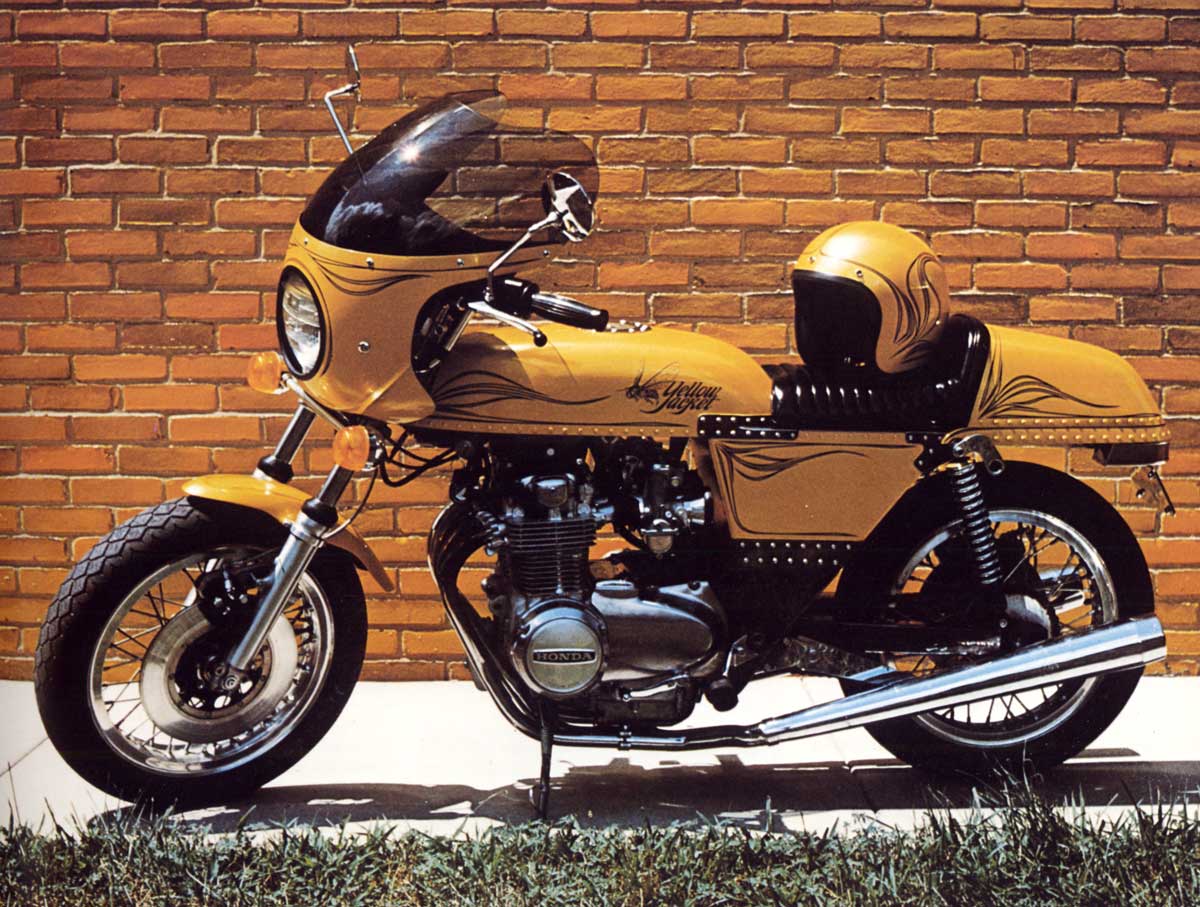
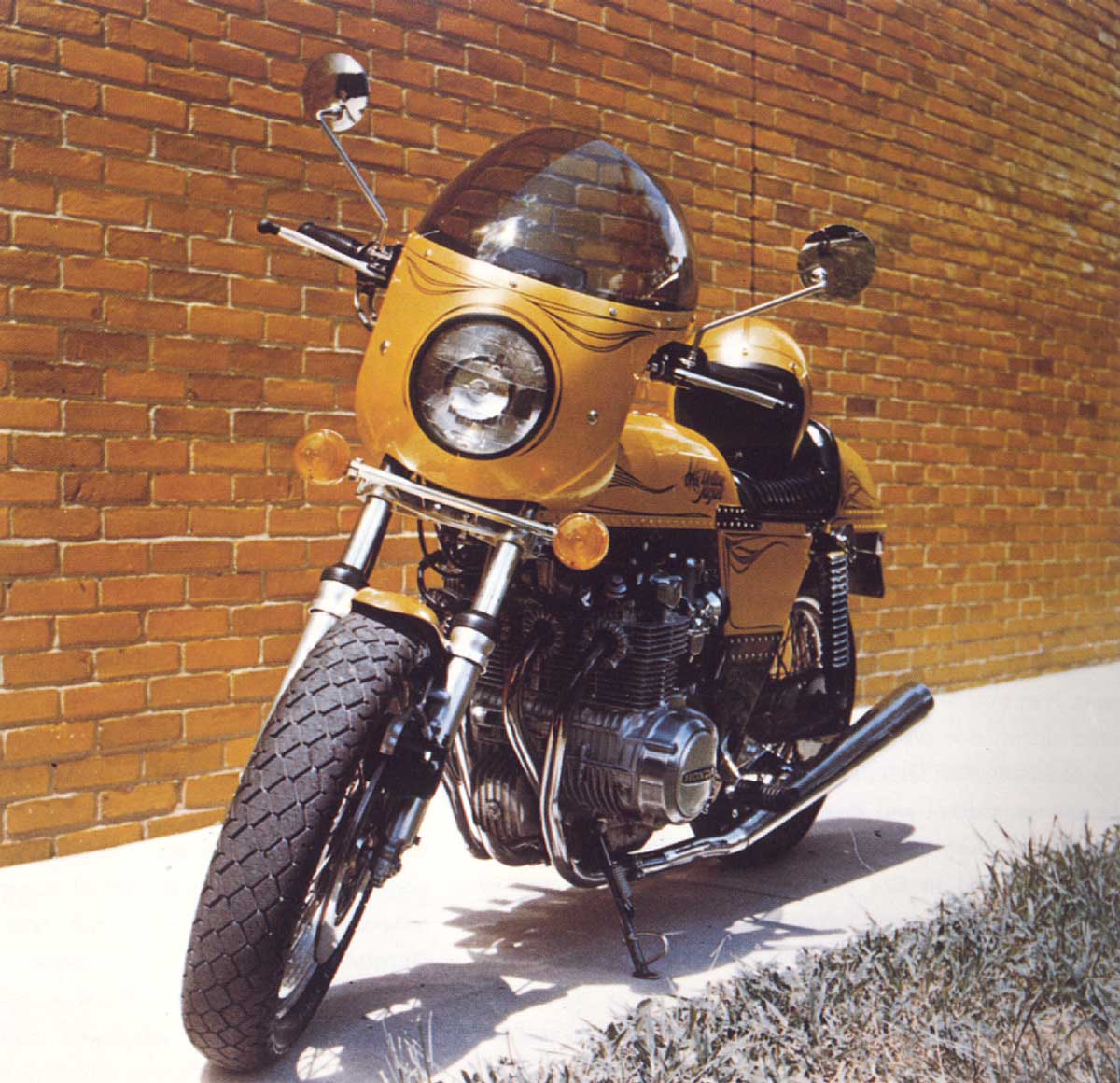
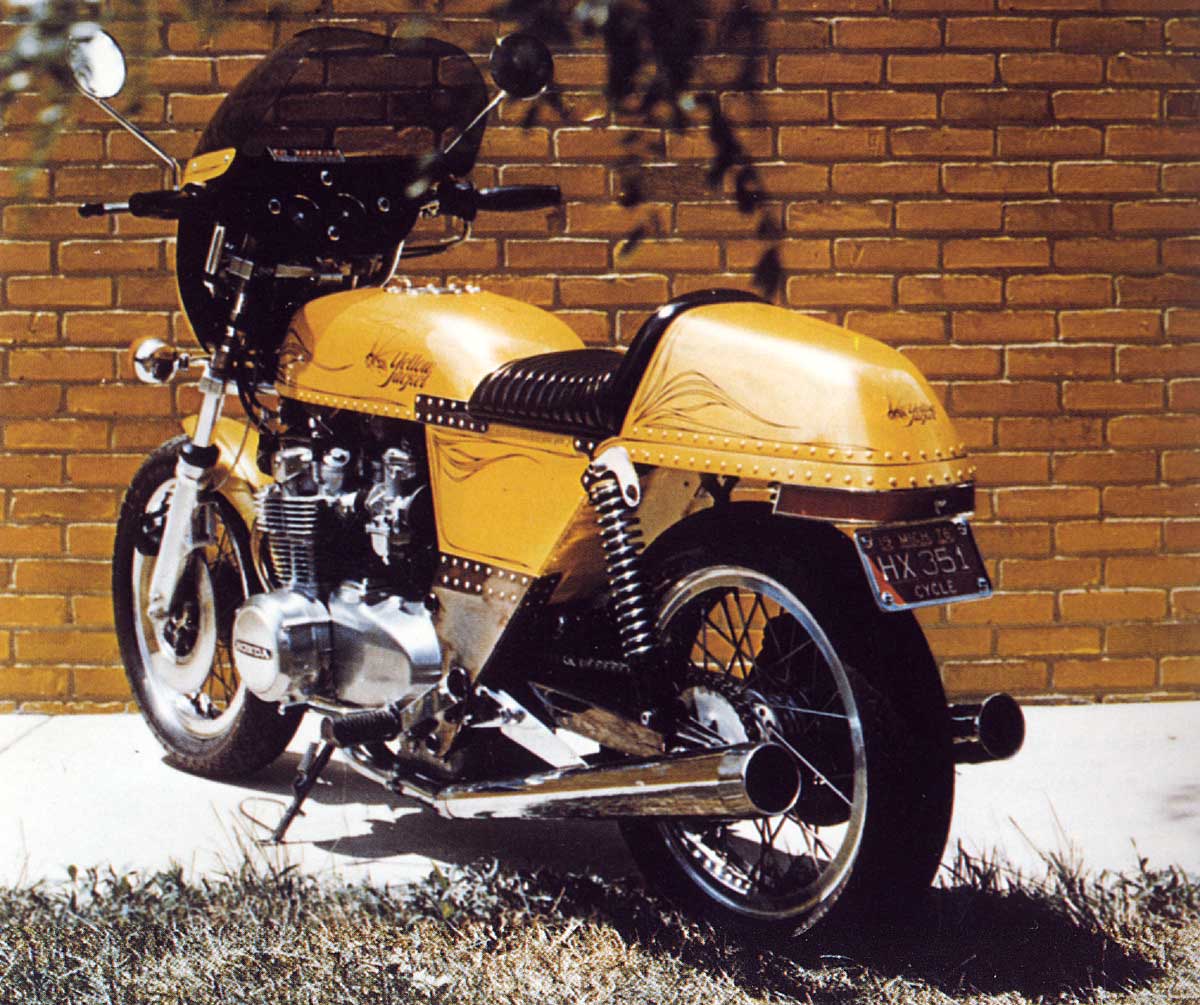
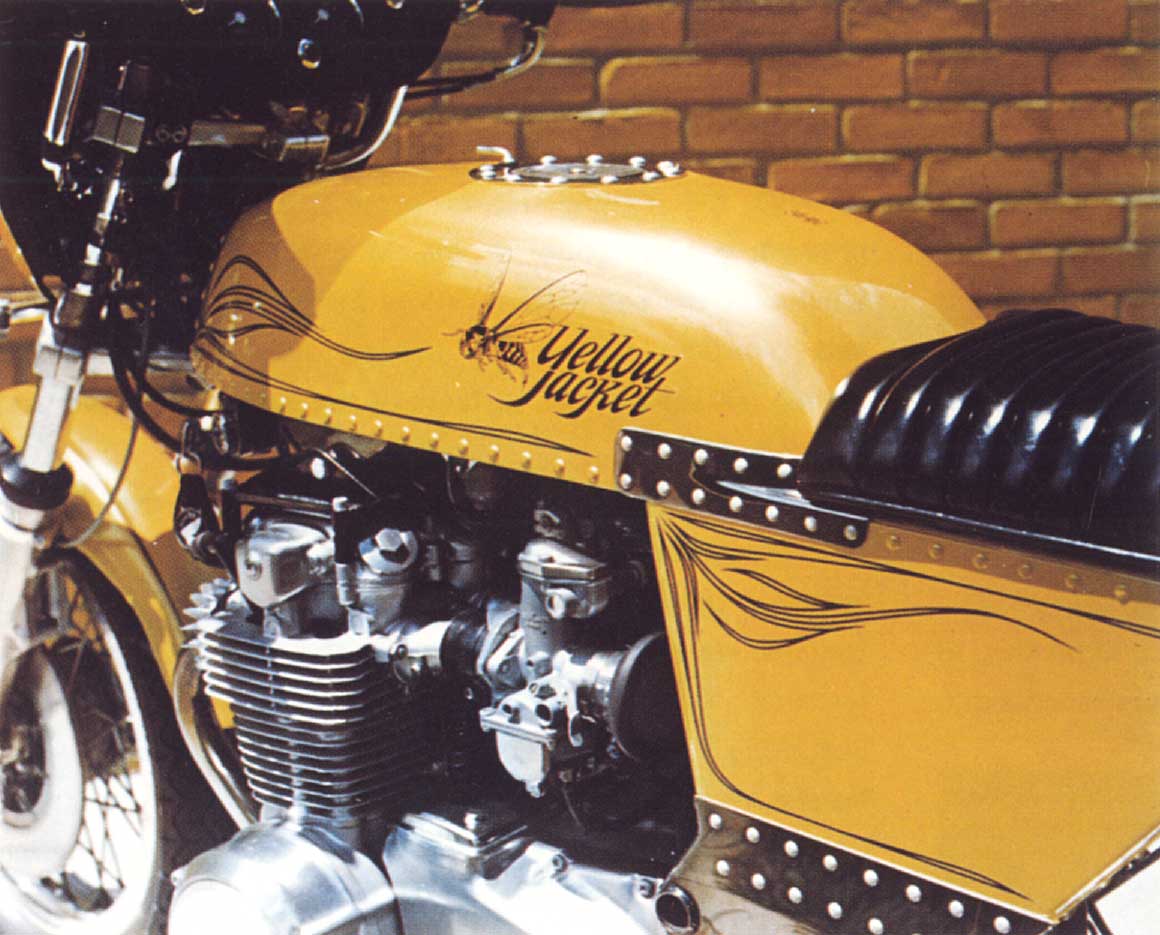


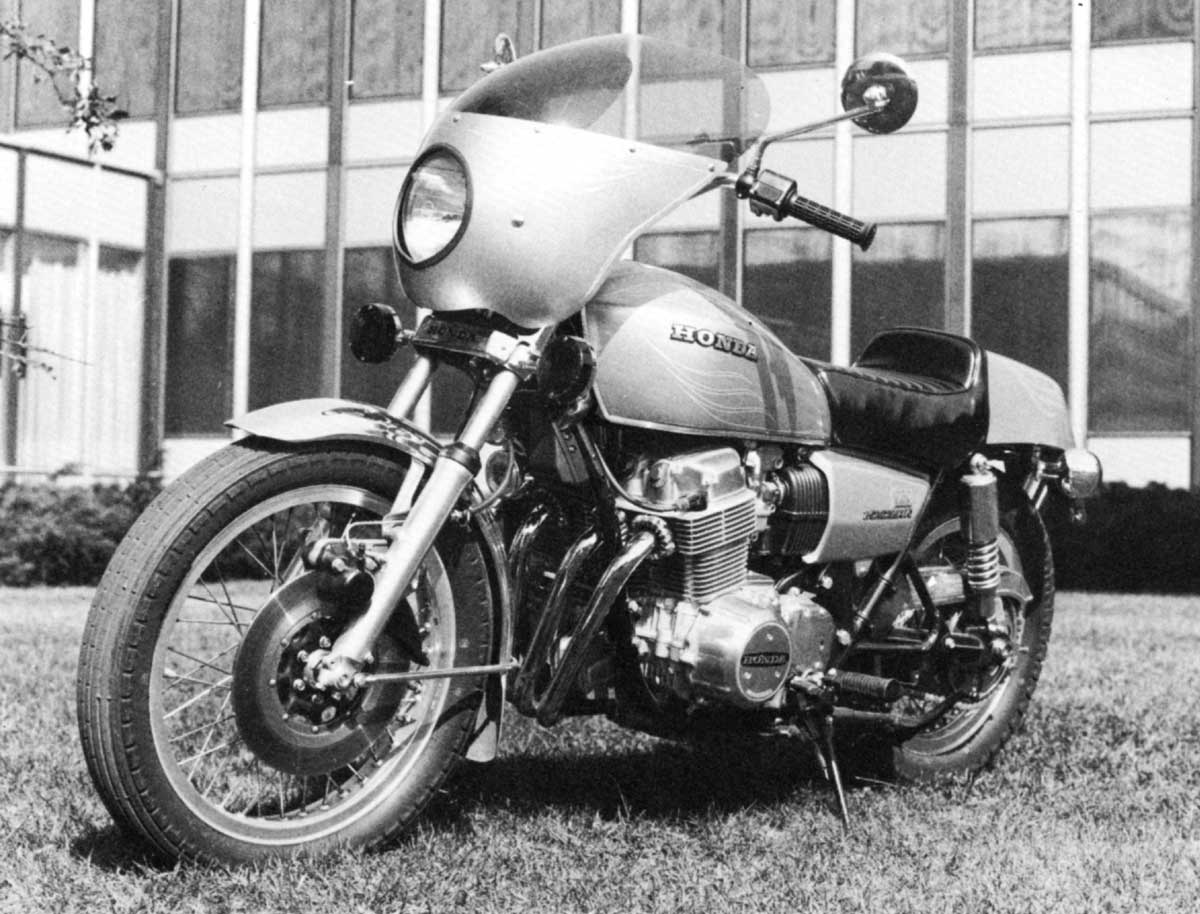
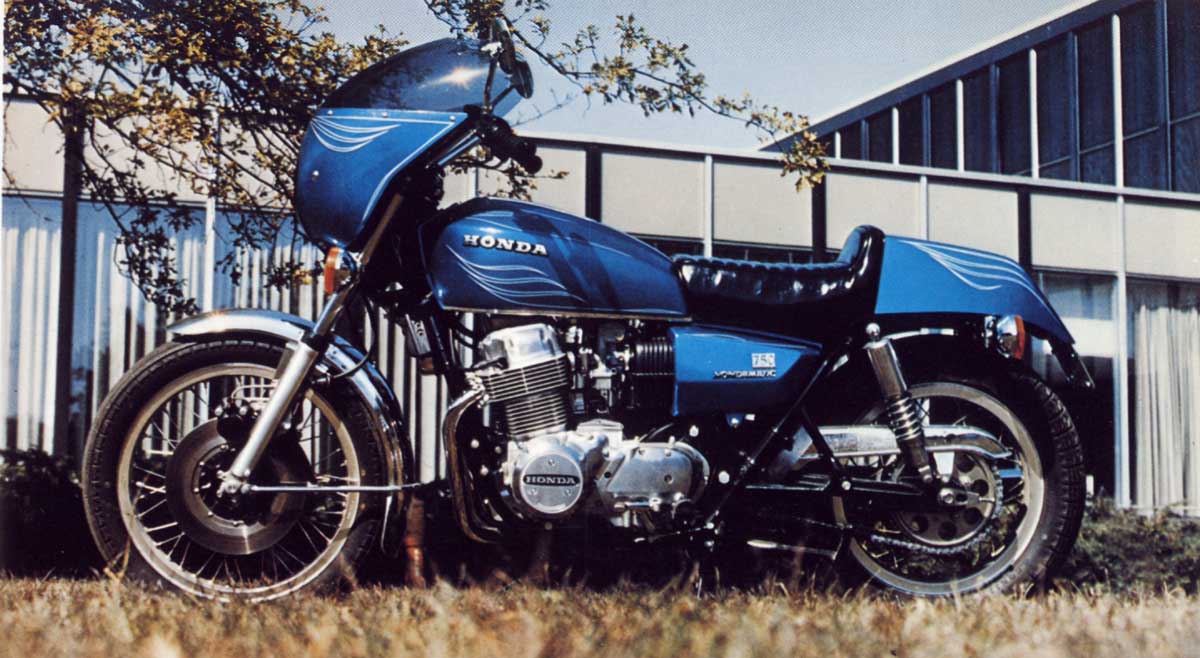
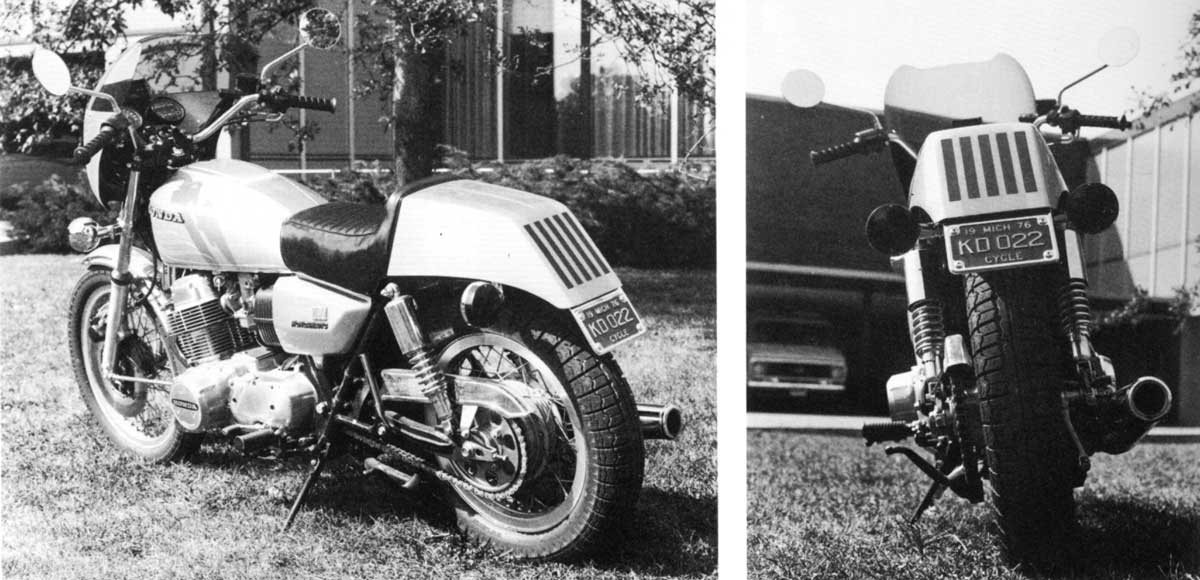
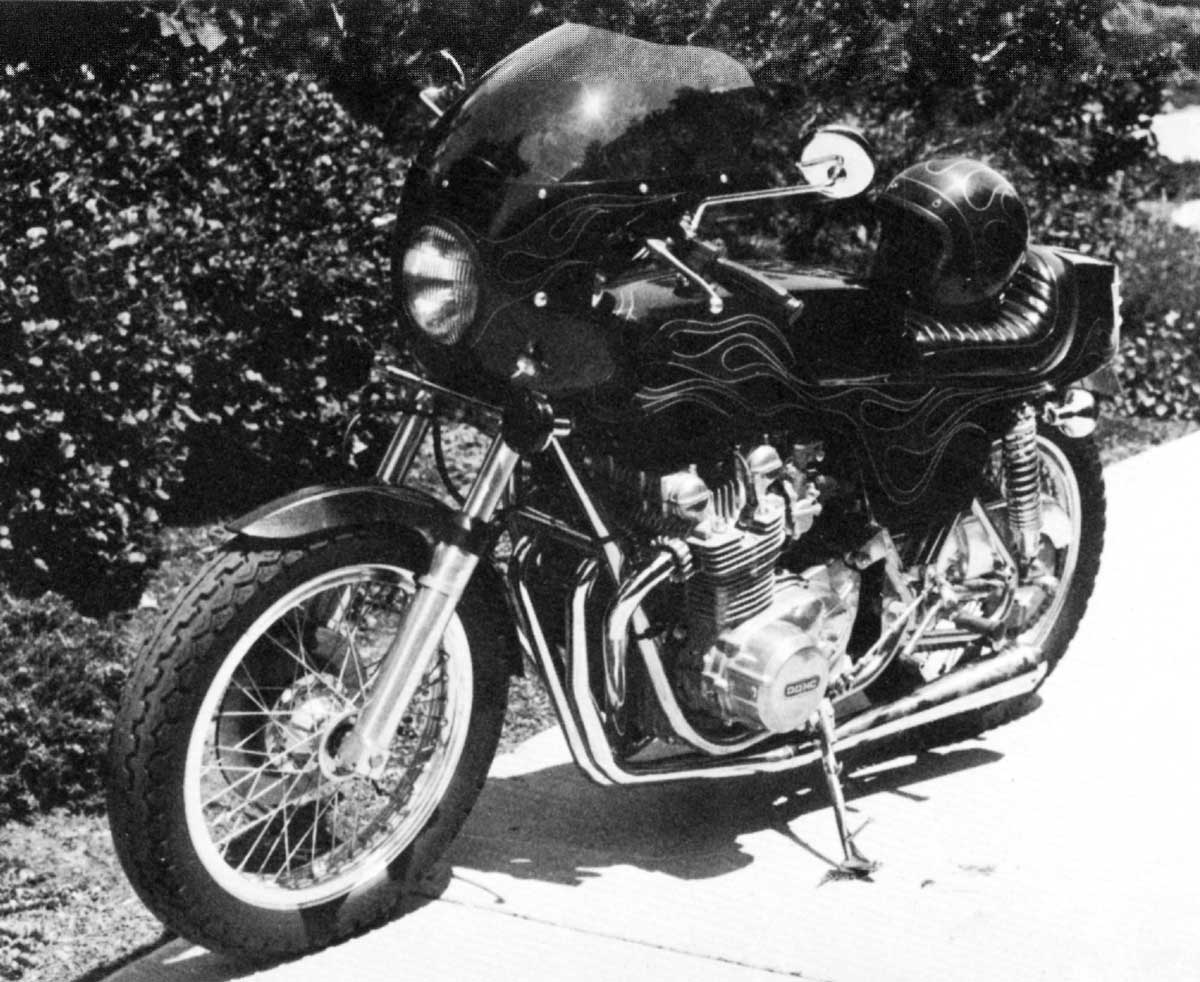
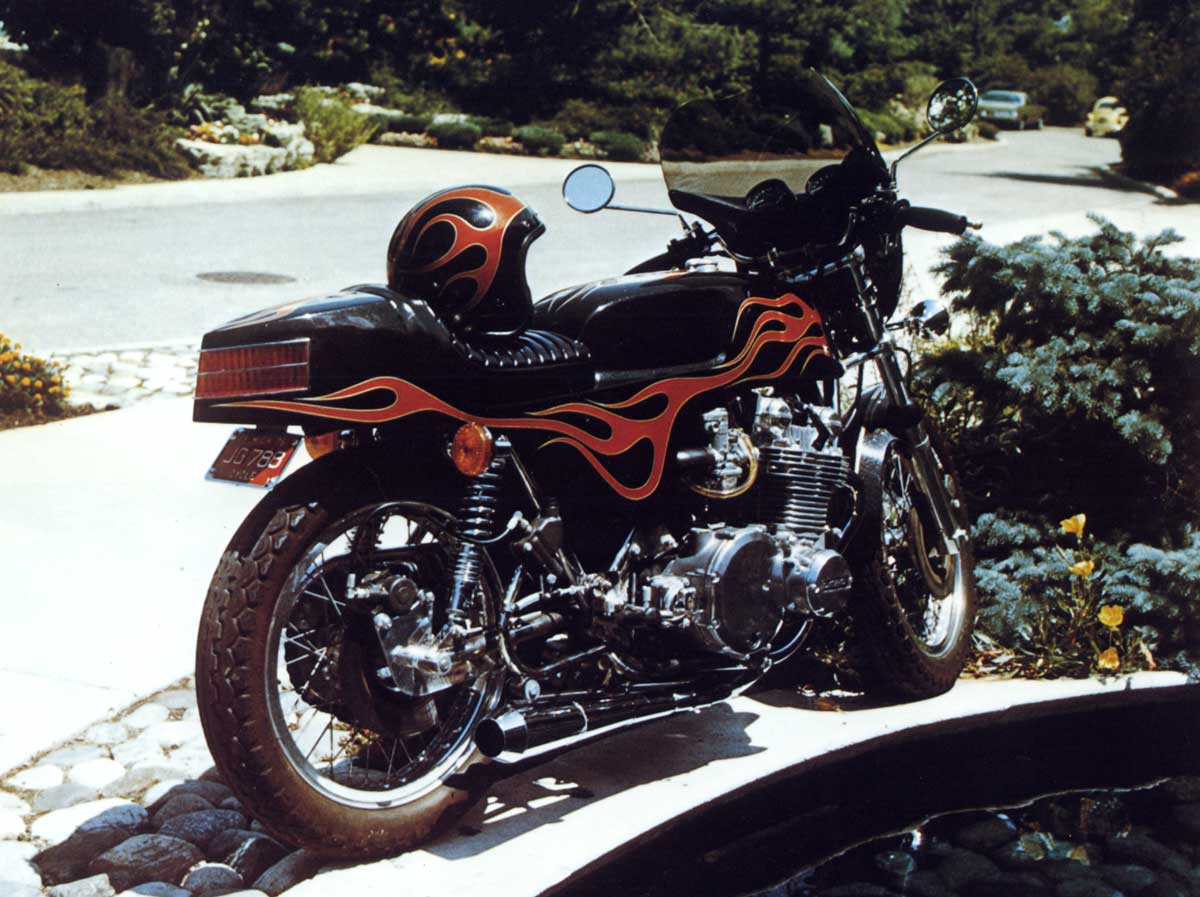
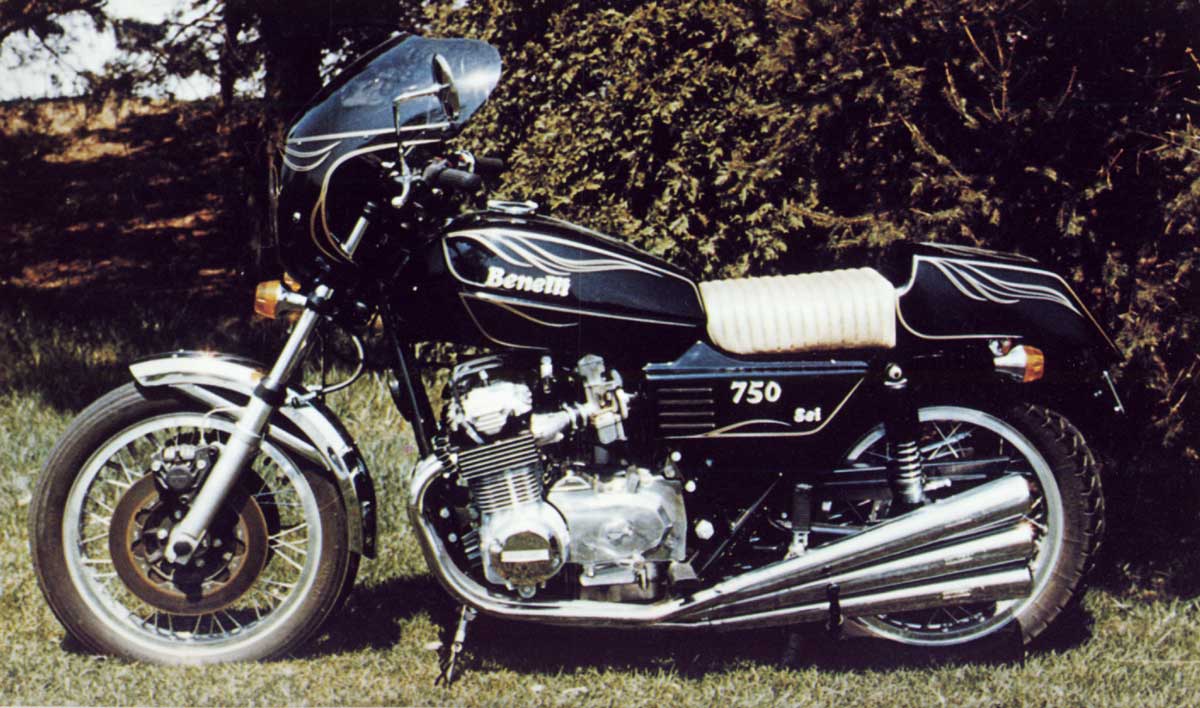
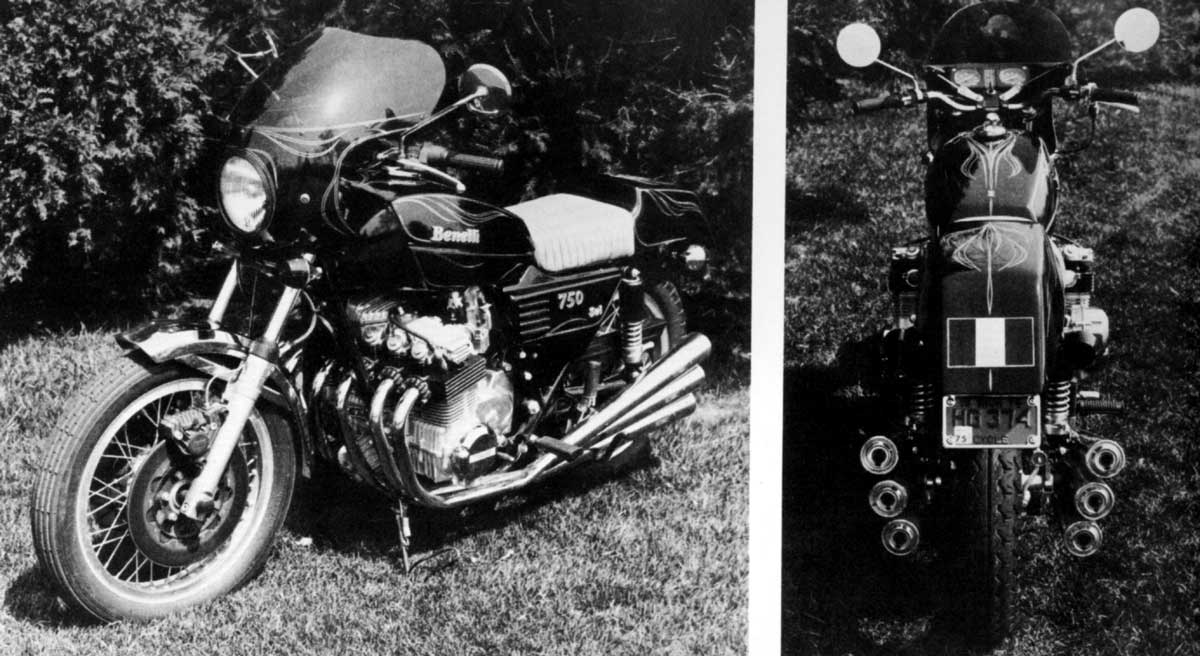
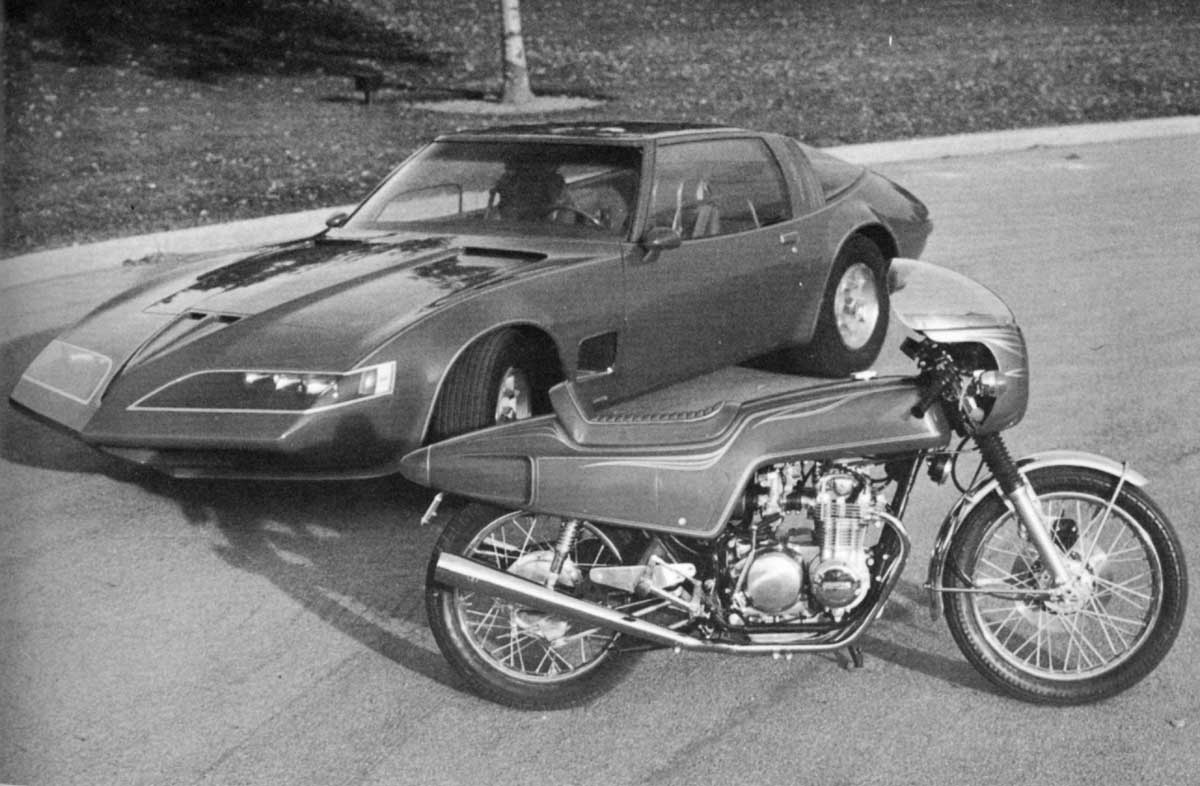
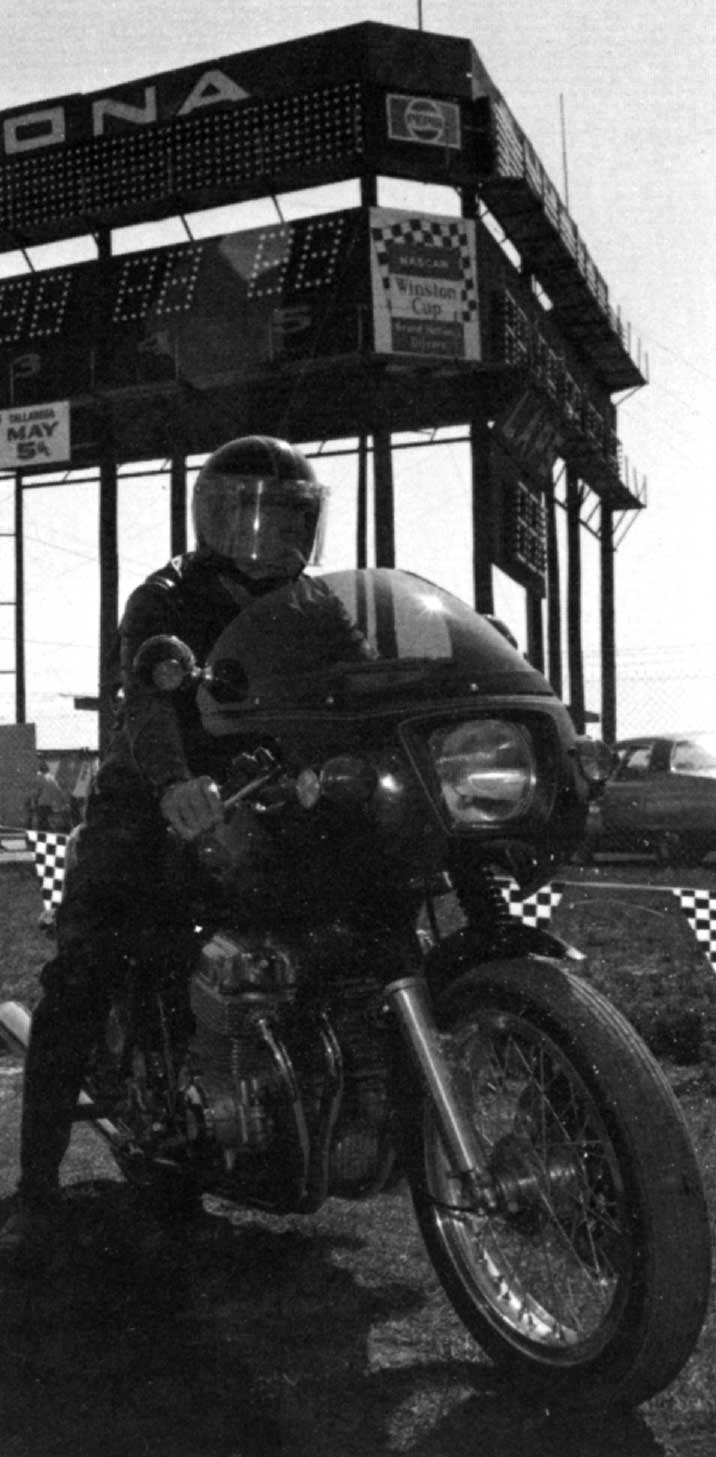
I am surprised that there’s no discussion of Mitchell’s custom helmets here. Other than that, as a rider I admire (as any car/motorcycle guy would) the styling shown here, but almost all of the motorcycles show the same real-world problem: lack of cornering ground clearance. A cursory look at each will show this is so. That said, I’d love to ride the Yellow jacket if it had dual discs in front.
It would be interesting to see a follow-up “Where Are They Now?” article to these, telling the story of where these bikes have ended up. Like the custom guitars of legendary musicians, these machines transcend an existence as just motorcycles, and are really mechanical artwork, each one an individual artistic statement.
It is interesting that Bill Mitchell went to deep into the fubctionality of motorcycles. Some very good designers worked with him and it would be really interesting to hear what it was like working with him on the bikes.
I know very little about bikes after one hair raising experience when in high school so I can only admire how he focused his aesthetic skills on them and changed the industry, almost as a sideline.
It’s interesting that the Kawasaki-Rickman 900 used Reynolds 531 tubing. The question I have is knowing that Reynolds 531 reacts poorly to the high heat of MIG and TIG welding, does the frame use brazed on lugs as was used on my Raleigh road bicycle with Reynolds 531? I also wonder if it’s double-butted again like in my road bike.
Regarding designers working on Mitchell’s personal projects how did this go over with GM?
Jon Albert, after Bill died all the bikes were sold. Bill’s daughter bought a ranch near us in Montana. One visit we talked about the bikes, she said when Her dad had health problems he had them all sold.
The best one,the Stingray (Harley Davidson) we did with my friends Bill Davidson and Evel Knievel, sold for a very high price in Las Vegas.
I’m currently restoring one of his early bikes- ‘72 Yamaha XS 650- I’d love to know a bit more about its design if anyone has any input? (Bernie Smith’s son commenting)